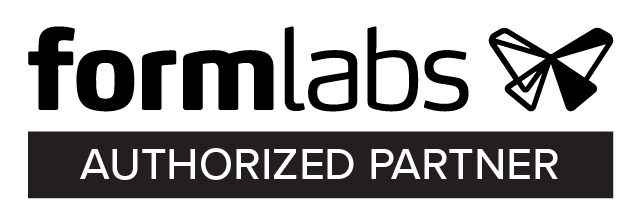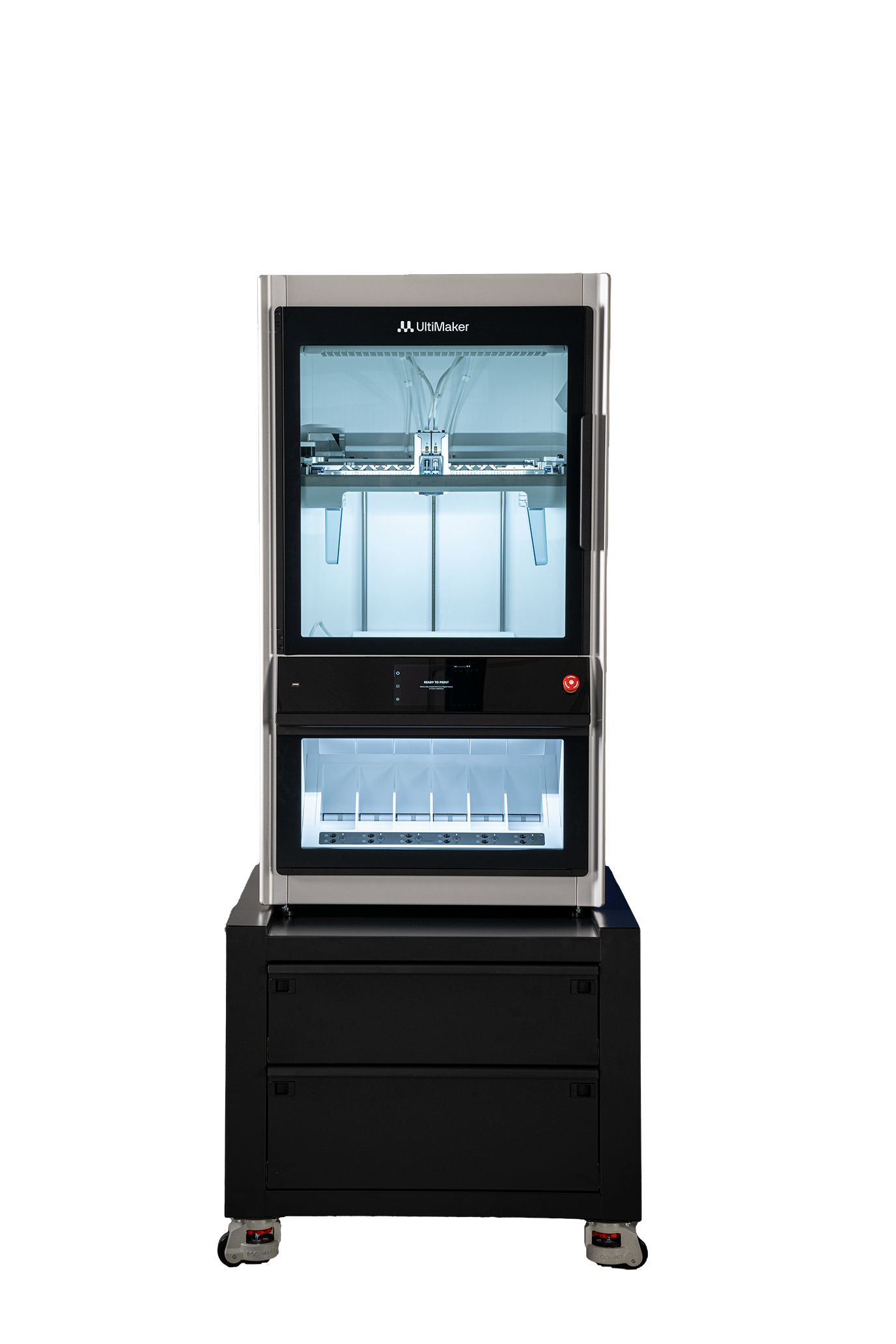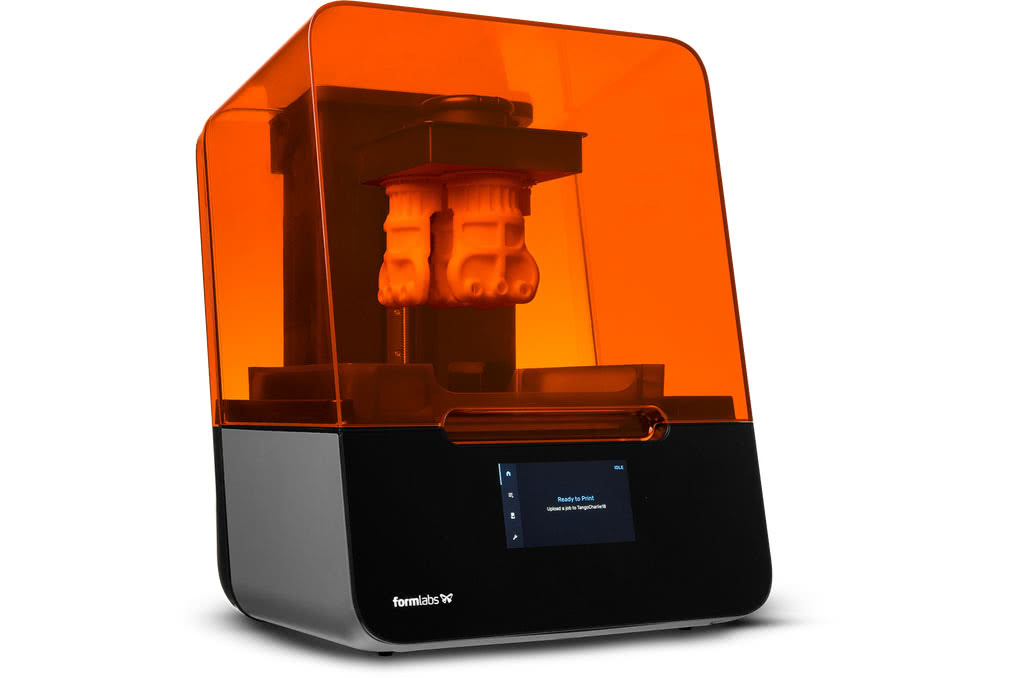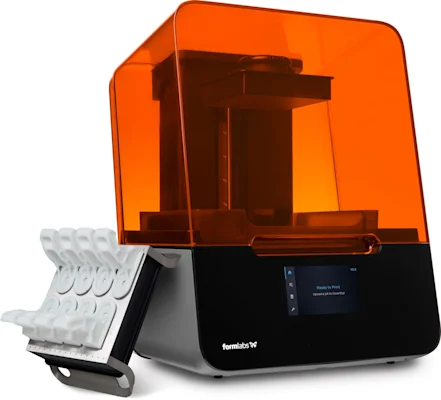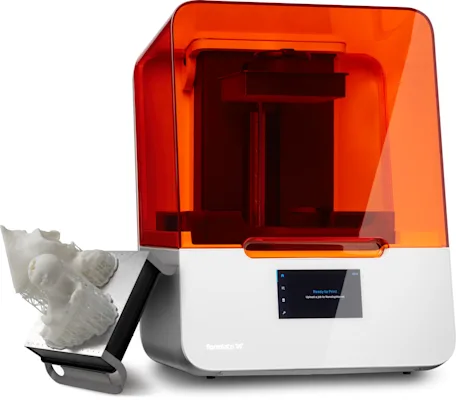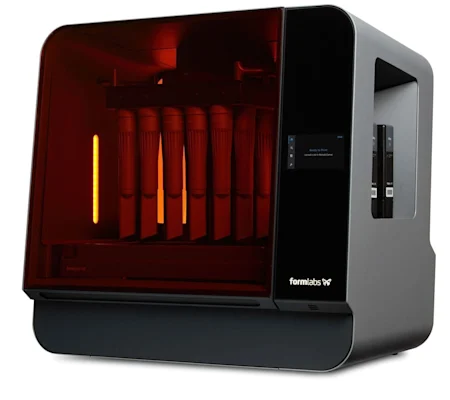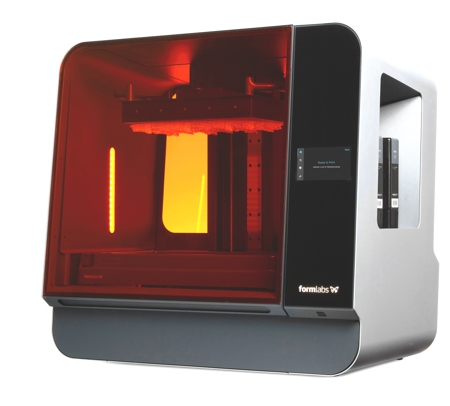All Printer Models
Print process FAQs
- What is 3D Printing?
- How do I choose a 3D printer?
- What is SLA technology?
- What is SLS technology?
- Low Force Stereolithography
3D printing or additive manufacturing (AM) technologies create three-dimensional parts from computer-aided design (CAD) models by successively adding material layer by layer until the physical part is created.
While 3D printing technologies have been around since the 1980s, recent advances in machinery, materials, and software have made 3D printing affordable for a wider range of businesses, enabling more and more companies to use tools previously limited to a few high-tech industries.
Today, professional, low-cost benchtop and desktop 3D printers accelerate innovation and support businesses in various industries including engineering, manufacturing, dentistry, healthcare, education, entertainment, jewellery, and audiology.
Various manufacturing techniques with 3D printed materials have their benefits and limitations that make them more suited to such applications. Compared to outsourcing services or using traditional tools such as machining, 3D printing has an opportunity to save hours or days of the production cycle. Here we compare SLA and SLS printing technologies.
Stereolithography was the world’s first 3D printing technology, invented in the 1980s, and is still one of the most popular technologies for professionals. SLA resin 3D printers use high-temperature laser power to cure liquid resin into hardened plastic in a print process called photopolymerization.
SLA parts have the highest resolution and accuracy, the clearest details, and the smoothest surface finish of all plastic 3D printing technologies, but the main benefit of SLA lies in its versatility. Material manufacturers have created innovative SLA photopolymer resin formulations with a wide range of optical, mechanical, and thermal properties to match those of standard, engineering, and industrial thermoplastics.
SLA is a great option for highly detailed prototypes requiring tight tolerances and smooth surfaces, such as molds, patterns, and functional high-quality parts. This is made all the more effective by Formlabs with their post-processing Form Wash and Form Cure peripherals. SLA is widely used in a range of industries from engineering and product design to manufacturing, dentistry, jewellery, model making, and education.
Selective laser sintering is the most common digital fabrication technology for industrial applications, trusted by engineers and manufacturers across different industries for its ability to produce strong, functional, high-resolution repeatable prints.
SLS 3D printers use a high-powered laser to fuse small particles of polymer powder. The unfused powder supports the part during printing and eliminates the need for dedicated support structures. This makes SLS ideal for complex geometries, including interior features, undercuts, thin walls, and negative features. High-resolution parts produced with SLS printing have excellent mechanical characteristics, with strength resembling that of injection-molded parts.
The most common material for selective laser sintering is nylon, a popular engineering thermoplastic with excellent mechanical properties. Nylon is lightweight, strong, and flexible, as well as stable against impact, chemicals, heat, UV light, water, and dirt.
The combination of low cost per part, high productivity, and established materials make SLS a popular choice among engineers for functional prototypes, and a cost-effective alternative to injection molding for limited-run or bridge manufacturing.
Low Force Stereolithography substantially reduces the force exerted by parts during the printing process. The product is achieved by using a flexible tank that bows gradually when the component is lowered into the resin. It facilitates light touch support structure and enhances performance and reusability. Form 3 makes fast prototyping and post-processing easy and fast with quick-release support structures.
Still not sure? How about a free sample?
If you’re considering 3D printing, you can try it out for free. Get a free sample part to see how great the print quality is and get a sense of how much money and time it will save you. If you are thinking of buying a 3D printer, contact us to try before you buy.
